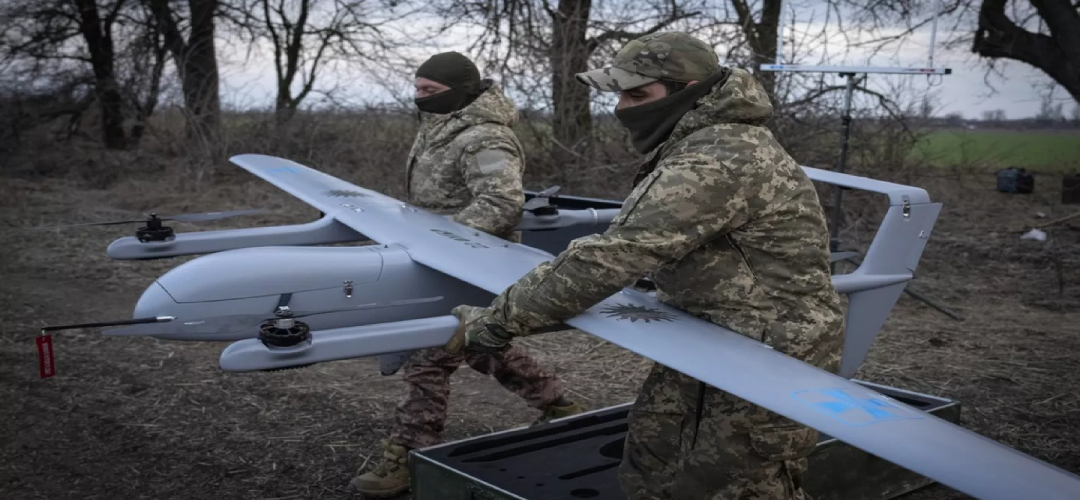The ecological echoes of the conflict reverberate across scorched landscapes and polluted waters.
A dark storm cloud of pollution hangs over Ukraine and Gaza, unleashed by the winds of war. It infects the very essence of the land, reducing the landscape to scarred planes.
As per the UN Environment Program (UNEP), the Russian invasion of Ukraine has left a toxic legacy for generations to come. Similarly, Israel’s invasion of Gaza has induced widespread destruction of life as well as farms, natural flora and fauna and the ecosystem. In a grim report delivered in January, Martin Griffiths, the UN undersecretary-general for humanitarian affairs, said, “Gaza has simply become uninhabitable.”
UNEP is assisting Ukraine’s government in monitoring the remote environmental impact and assisting in field-level assessment. Sadly, the intense close combat in Gaza inhibits any such international monitoring.
The full-blown conflicts have already caused significant damage to energy infrastructure, mines, water infrastructure, industrial sites and agro-processing facilities in both regions. This has given birth to heightened air pollution and ground and surface water contamination.
Background
“Ecocide is the wilful destruction of ecology—of the environment—as a weapon of war,” said David Zierler, a historian of science and author of The Invention of Ecocide: Agent Orange, Vietnam, and the Scientists Who Changed the Way We Think About the Environment. Ecocide, attracting much lesser attention than human fatalities, is still an imperative and a bitter aftertaste of war in conflict zones.
The denotation of munitions and the conscious, deliberate targeting of critical infrastructure has given rise to toxic spills, contamination, poisoning and de-fertilising the land, making it unfit for future generations. Reminiscent of the Chornobyl disaster, the ecological fallout of warfare has caused billions of dollars in green damage.
Ukraine’s Ministry of the Environment and Natural Resources launched EcoZagroza to record environmental crimes committed by Russia. Estimates show that Russia’s invasion has inflicted around €52.4 billion in environmental damage, including €27 billion in air damage, €23.6 billion in waste pollution, €1.5 billion in water damage, and €0.3 billion in soil damage. Ukraine intends to hold Russia accountable for environmental damage, including the havoc wreaked by the breaching of the Kakhovka Dam.
The U.S. is working with Ukraine to develop decentralised systems, renewable energy, and nature-based solutions to combat pollution, clean air and water, and mitigate floods. U.S. agencies are drawing from the experiences of 2019 historic floods in the Mississippi River Basin, where over 66,000 acres of wetland areas were restored.
In Gaza, it is estimated by independent agencies that the soils of Gaza have endured significant damage, with 38-48% of tree cover and farmland destroyed. The war has also led to the destruction of agricultural land and the lack of fuel, forcing people to cut down trees for cooking and heating. The destruction will significantly impact ecosystems and biodiversity, leading to calls for the damage to be considered “ecocide” and investigated as a possible war crime. Forensic Architecture (FA) has found that Israeli military activity has destroyed over 65 sq km of land in Gaza, including farms and greenhouses, destroying nearly a third of the agricultural infrastructure. The destruction is systematic, with ground troops dismantling greenhouses and tractors and uprooting orchards and fields of crops. FA’s satellite analysis shows the area is now a desert with no trees. Israel has suggested making some of these demolitions permanent, with some officials proposing a buffer zone along the border. Some demolitions have also led to the construction of Israeli military infrastructure, such as Route 749, which is a “military necessity” for the Israeli military.
The Israel Defense Forces (IDF) claims to follow international law and limit damage to agricultural areas and the environment.

Analysis
With little precedence for guidance, ensuring the legal accountability of perpetrators would not be easy. Legal challenges include collecting substantial evidence amid conflict, quantifying the damage, and implementing complex legal compensation procedures.
The war in Ukraine has damaged the environment and caused immense human costs, requiring international law to protect and preserve it. A lasting peace requires rebuilding and restoring Ukraine’s natural and built environments.
For now, ecocide is currently not considered a crime under international law. However, countries like Vanuatu and Ukraine are advocating for its prosecution as a war crime to make it the fifth international crime the International Criminal Court could prosecute.
In Gaza, the consequences of ecocide are not merely confined to the physical realm but extend to the psychological and emotional well-being of its inhabitants.
Since Russia’s invasion, the world has provided billions of dollars in humanitarian aid, security assistance, and economic support to Ukraine. The U.S. has provided over $63 billion, while the European Union has committed over $54 billion. However, these sums are insufficient as very little is going towards arresting the ecological damage. For example, the damage to the Nova Kakhovka Dam will cause environmental and economic devastation for generations.
The ongoing crises in Ukraine and Gaza highlight the dire need for sustained and comprehensive international support to address both immediate humanitarian needs and long-term infrastructure development. For a sustainable future, the global community must intensify its commitment to rebuilding and development efforts, ensuring that Ukraine and Gaza can recover and thrive despite the ongoing adversities.
Assessment
- Emerging technologies, such as artificial intelligence and renewable energy solutions, should be leveraged to accelerate the reconstruction and economic revitalisation of war-torn regions like Ukraine and Gaza.
- At the same time, international aid strategies evolve to ensure more effective and sustainable infrastructure development in conflict zones, potentially preventing future environmental and economic crises.
- More importantly, international legal protocols must give teeth to Ecocide crimes at the same level as crimes against humanity. Only then can enforceable protocols and regulations be evolved by the UN for observance by all.



